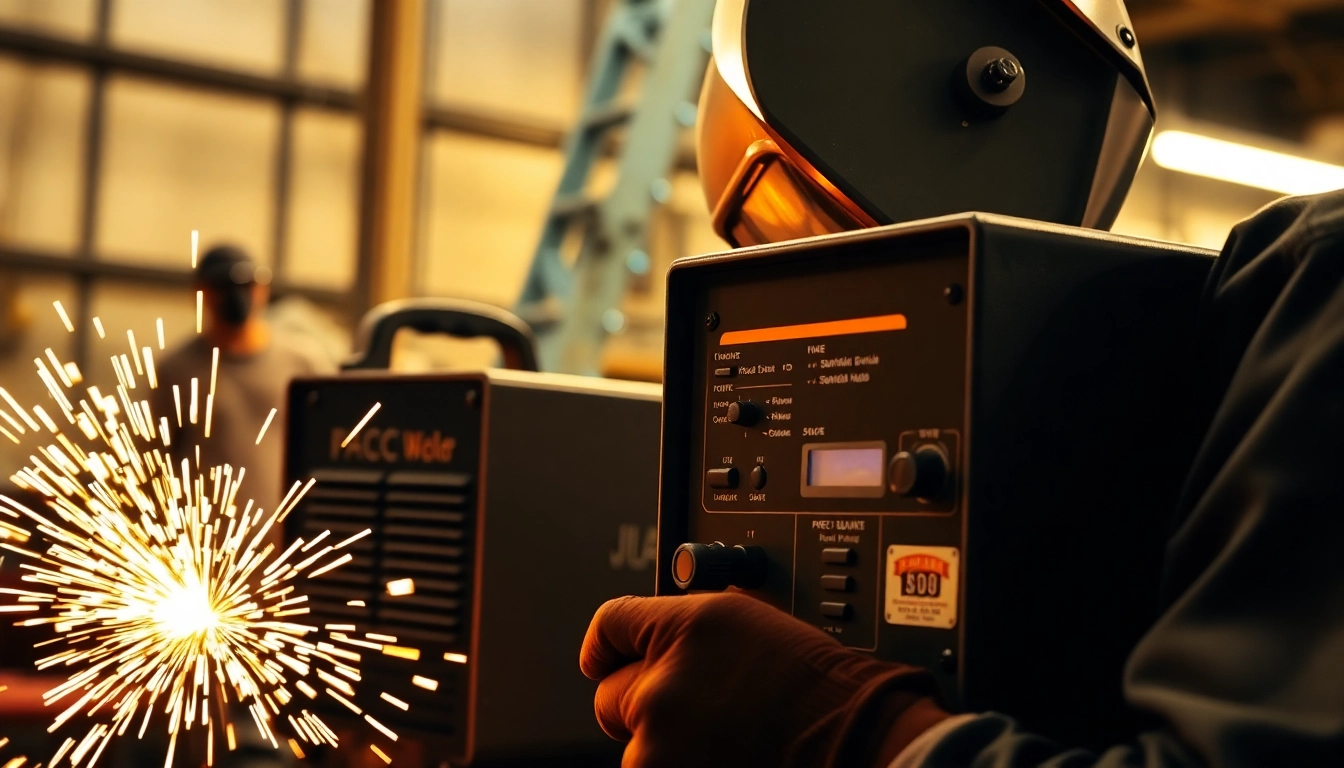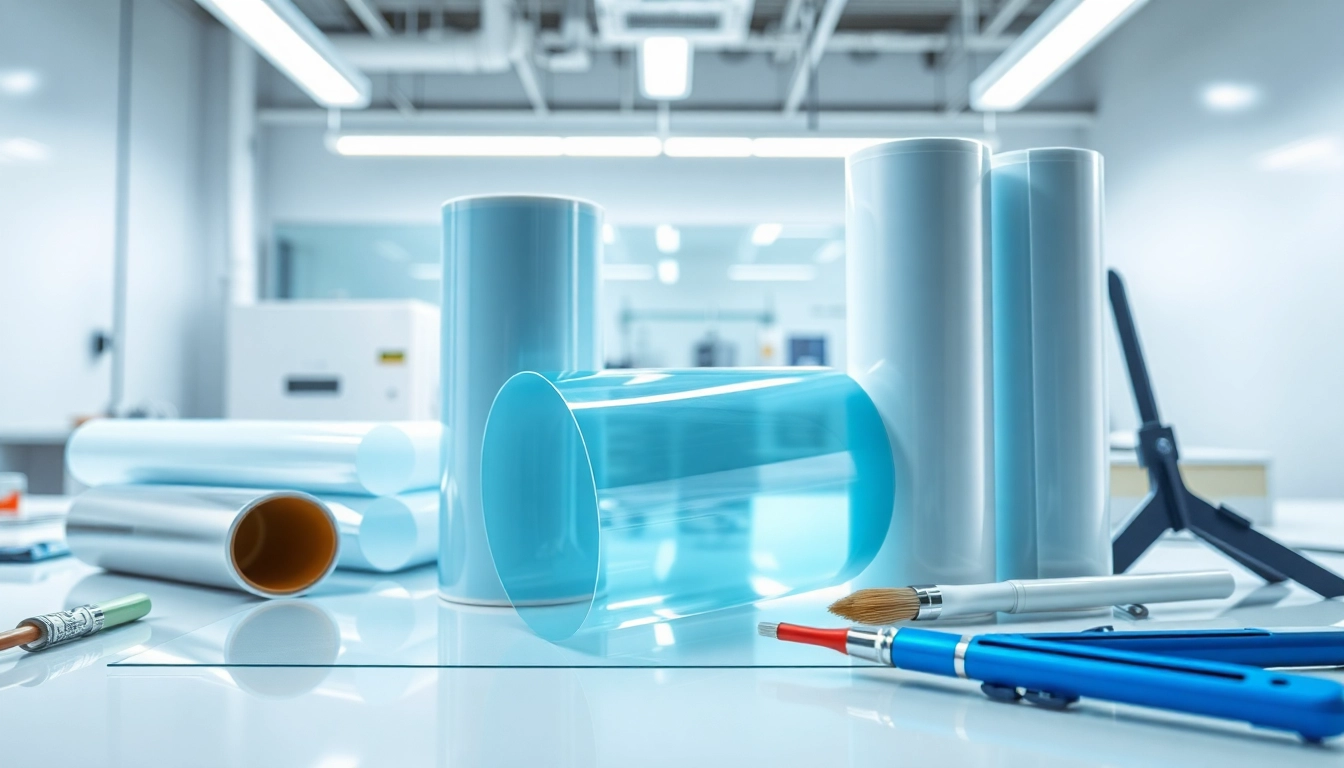Understanding Blow Molding Machines
What is a Blow Molding Machine?
A Blow Molding Machine is an industrial device used to create hollow plastic parts by inflating heated plastic within a mold. Primarily utilized in the manufacturing of bottles, containers, and other hollow products, these machines operate by manipulating temperature and air pressure in a precise manner. The process is important in the plastic production industry as it enhances efficiency and shapes complex designs that may not be possible with traditional molding methods.
Types of Blow Molding: EBM, IBM, ISBM
Blow molding processes can be categorized into three primary types, each suited for different applications:
- Extrusion Blow Molding (EBM): This method involves extruding a tube of hot plastic and enclosing it in a mold where it is inflated to shape. It’s ideal for producing bottles and other hollow products.
- Injection Blow Molding (IBM): In this approach, a preform is created using injection molding, which is then blown into its final shape. This technique delivers high precision and is often used for smaller, intricate products.
- Injection Stretch Blow Molding (ISBM): Combining the principles of injection molding with blow molding, ISBM is particularly effective for producing lightweight bottles with excellent clarity and strength. The process stretches the preform to enhance its molecular orientation.
Key Components and Their Functions
A blow molding machine comprises several integral components, each playing a crucial role in the production process:
- Extruder: This is responsible for melting the plastic and forming it into a parison or preform.
- Mold: Molds dictate the final shape of the product and can be designed for specific items or to accommodate various designs.
- Blow Pin: Air is injected into the heated plastic through this pin, expanding the material to conform to the mold.
- Control System: Modern machines utilize advanced control systems to manage the temperatures, pressures, and timings required for precision manufacturing.
Blow Molding Processes Explained
Step-by-Step Guide to Blow Molding
The blow molding process can be broken down into several key steps:
- Heating: The plastic material is heated until it reaches a molten state suitable for molding.
- Forming a Parison: The molten plastic is extruded or injected to create a parison, a tube-like structure.
- Applying Air Pressure: The parison is placed into a mold where air pressure is applied, expanding it to fill the mold completely.
- Cooling: Once shaped, the plastic is cooled to solidify before being ejected from the mold.
- Finishing: Additional processes may include trimming, inspection, and packaging before the products are ready for distribution.
The Role of Temperature and Pressure
In blow molding, both temperature and pressure are critical. The temperature affects the plastic’s flow and ability to conform to the mold while maintaining the right pressure ensures the material expands evenly without defects. An optimal temperature must be maintained according to the specific type of plastic being used, as different polymers exhibit varying melting points and behavior under pressure.
Common Materials Used in Blow Molding
Several types of plastics are suitable for blow molding, including:
- Polyethylene (PE): Commonly used for bottles and containers due to its flexibility and resistance to impact.
- Polypropylene (PP): Known for its strength and lightweight properties, often used in more durable applications.
- Polyethylene Terephthalate (PET): Widely utilized for beverage bottles, valued for its clarity and strength.
- Polyvinyl Chloride (PVC): Suitable for rigid products and offers excellent chemical resistance.
Advantages of Using Blow Molding Machines
Cost-Effectiveness in Production
One of the primary advantages of blow molding is its cost-effectiveness. The process allows for mass production, which significantly reduces the cost per unit. Additionally, the machinery has a high throughput, enabling manufacturers to produce hundreds of thousands of items with minimal downtime. The longevity of blow molds and the quick cycle times further contribute to reduced operational costs.
Versatility for Different Plastic Products
Blow molding machines are highly versatile and can cater to various product shapes and sizes. From large industrial containers to small cosmetic bottles, the adaptability of this technology allows manufacturers to delve into diverse markets. The ability to switch between types of molds also permits quick adjustments to production lines as demand changes.
Energy Efficiency and Environmental Impact
Modern blow molding machines are designed with energy efficiency in mind. Innovations such as servo-driven technologies reduce power consumption significantly while maintaining output quality. Moreover, as the industry becomes increasingly concerned with sustainability, many manufacturers are exploring bio-based and recycled materials, minimizing the environmental footprint of blow molding processes.
Choosing the Right Blow Molding Machine
Factors to Consider: Size, Capacity, and Features
When selecting a blow molding machine, several factors should be taken into account:
- Size: Assess the floor space available and the size of the products to be produced. Machines must fit within current operational layouts.
- Capacity: Understand the production volume requirements. Machines vary widely in their output capabilities.
- Features: Modern machines may come with automation integration, user-friendly interfaces, and advanced monitoring systems that enhance production efficiency and reliability.
Brand Recommendations and Comparisons
Several manufacturers are renowned for producing high-quality blow molding machines. Brands such as Wilmington Machinery, Parker, and Graham Engineering are recognized leaders in innovation and customer support. Researching performance metrics, warranty offerings, and user reviews can assist in identifying a manufacturer that aligns with business needs.
Maintenance Tips for Longevity
Proper maintenance is essential to ensure the longevity and optimal performance of blow molding machines. Regularly check for wear and tear on molds, maintain hydraulic systems, and ensure regular cleaning of all components. Implementing a comprehensive maintenance schedule can prevent unexpected downtime and costly repairs, enhancing overall productivity.
Future Trends in Blow Molding Technology
Automation and Machine Learning Integration
The adoption of automation and machine learning in blow molding is rapidly transforming production capabilities. Smart machines equipped with AI can analyze operational data in real-time, making adjustments that enhance efficiency and reduce waste. This trend not only optimizes manufacturing processes but also supports predictive maintenance, ensuring machines operate at peak performance.
Sustainable Practices and Eco-Friendly Materials
As environmental consciousness grows, manufacturers are increasingly focusing on sustainable practices. The integration of recycled materials into blow molding processes is becoming commonplace, with advancements in materials science allowing for the effective use of post-consumer plastics. Additionally, innovations in machine design are facilitating reduced energy consumption, minimizing the ecological impact of production.
Innovative Designs for Complex Products
The evolution of blow molding technology continues to push the boundaries of product design. New mold designs can support the creation of complex shapes that were previously challenging to achieve. This is particularly useful in sectors like consumer goods and automotive, where unique shapes and performance characteristics are highly demanded. A focus on lightweighting through innovative molding techniques is also gaining traction, enhancing both performance and sustainability.



